From December 8-14, we shared glimpses of Conrad Anker’s life through images and short stories via the Alpinist Community project. Anker has authored first ascents in the Great Ranges for three decades, including new routes in the Alaska Range, Patagonia, Antarctica, the Karakoram and the Himalaya. He is perhaps best known for his 2011 ascent of the Shark’s Fin on Meru Peak (with Jimmy Chin and Renan Ozturk), which was nominated for a Piolet d’Or, and subsequently immortalized in Meru, the recently Oscar-nominated film for best documentary. Anker’s article, The City and the Blade, was a feature story in Alpinist 38, and is available online as a four-part series at Alpinist.com.
Anker calls his collection The Life of Rad.
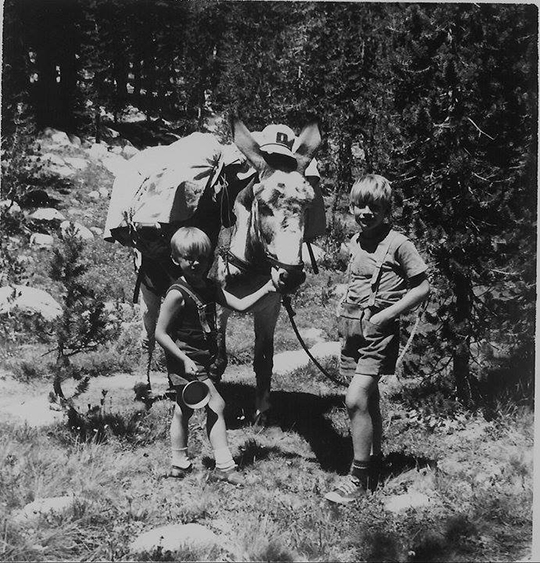
This is how it all started. Summer pack trips to the Sierra Nevada with my family. We would spend two weeks each summer traversing the high passes with a burro and a couple of mules. My mom, being from Germany, insisted we wear lederhosen: low maintenance, durable and sturdy. The glide factor on snow patches was every boy’s delight. I’m pictured here with my brother Steven.
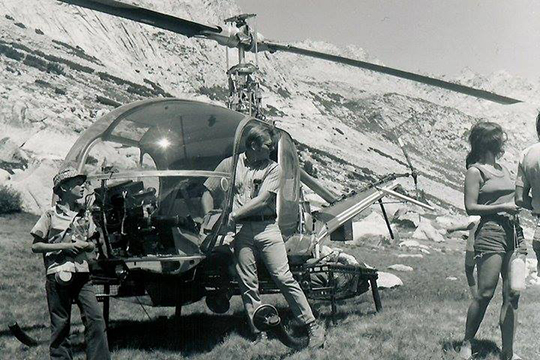
A few years after my family and I began our annual summer hikes in the Sierra Nevada, I witnessed a helicopter rescue with my dad. That day I had my favorite Hawaiian shirt on, and carried a tin cup for dipping from the streams. We never purified the water, we just lived like this is what we were meant to do.
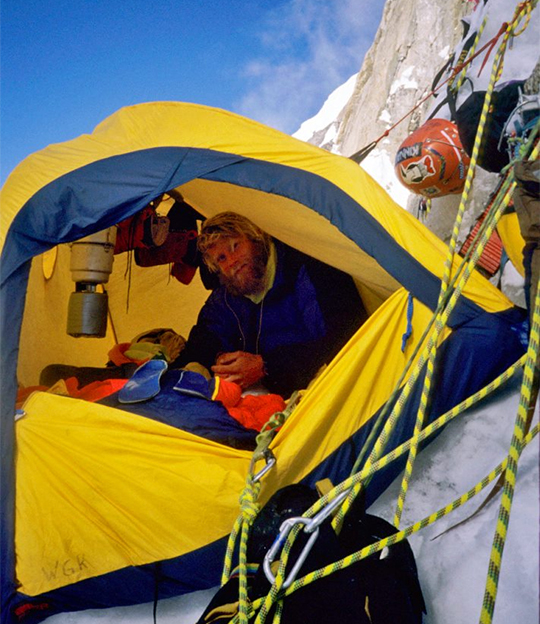
In the summer of 1989, Seth Thomas Shaw and I climbed the Northwest Buttress of Mt. Hunter (14,573′) by a new route we called Rattle and Hum. We set out to climb the route, which was mostly ice with a few granite bands with two bivouacs. We started on July 3 and got through the risky sections before the sun warmed up. Later in the day a storm rolled in. We pitched our tent and endured the tempest. Like the sensible 27-year-olds we were, we ate all of our chocolate, convinced we needed to power up for a harrowing descent. The weather cleared and we completed the route, descending the West Ridge on July 4. We were humbled by the difficulty the West Ridge entailed. It was far more difficult than we had imagined.

In 1990, The East Buttress of Middle Triple Peak (Embick-Graber-Long-Schunk, 1977), noted in the Fifty Classic Climbs of North America, had not seen a second ascent. For Seth Shaw and I, it became the lodestone of our quest for adventure. We set out in April to make the second ascent. We were determined not to use fixed ropes, and chose to ski in 26 miles from Rainy Pass. We loaded our kiddie sleds with two weeks of food, two ropes, a double set of Friends and a few pins. While on the approach, an earthquake shook the central Alaska Range, causing the Sunshine Glacier to shed a massive amount of ice. In this image Seth wonders if the ice is going to catch up to him.
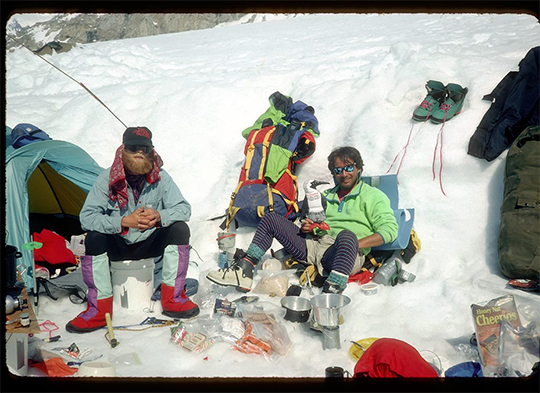
Alaska. This is where adventure happened. In 1989, I spent the season working and playing in various capacities. In April, Mugs Stump and I got stormed off the Eye Tooth. In May, I worked with Mugs, Paul Fitzgerald and the Arizona State geology department to sample rocks from the summit of Denali (20,310′) down to the 700-meter elevation. On July 4, Seth Shaw and I climbed a new route on the Northwest Buttress of Mt. Hunter (14,573′). In this image, Gordy Kito and I are your basic lazy chaps at base camp on Kahiltna Glacier, where I worked as a radio operator.
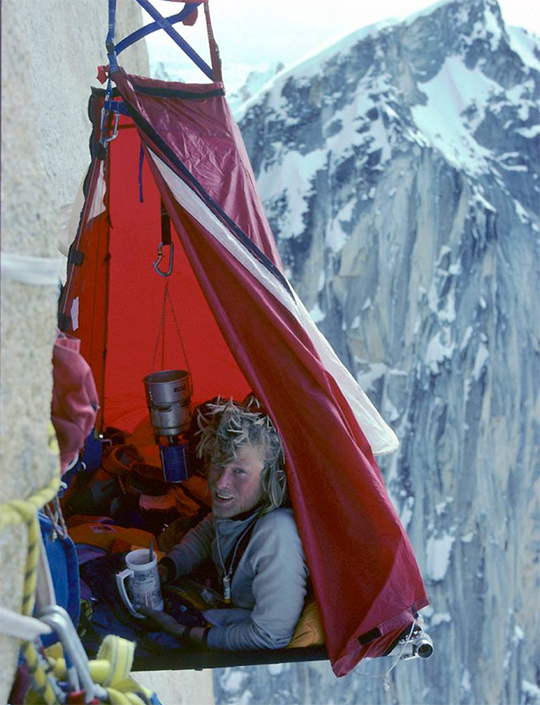
In 1987 Robert Ingle, James Garrett, Seth “ST” Shaw and I set out for an expedition to the Kichatna Spires of Alaska. We drove a 1972 Ford Econoline, aka “Blue Salmon,” up the Alaska Highway and had our own version of a Jack London adventure. The route we climbed, the Southeast Buttress of Gurney Peak (7,192′), was the second ascent of the mountain and via a big wall route. Our trip was supported by The American Alpine Club Climbing Fellowship Grant for young climbers. The $400 we received was more of a vote of confidence than anything else. We earned the trip and it is still to this day one fine experience.
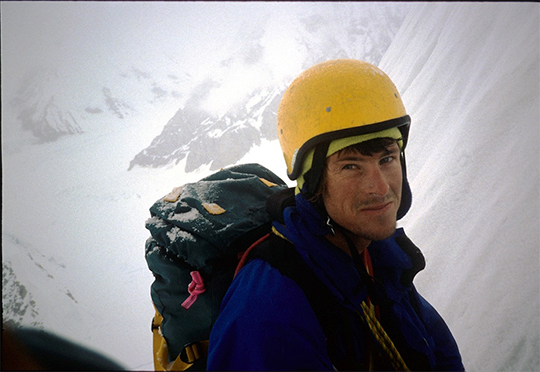
Seth Thomas Shaw. I met this fine man in the winter of 1981. I was washing dishes and flipping burgers at Park West, a western-themed ski resort in Park City. It’s now known as The Canyons and is a posh real-estate-driven resort. Back then I lived in a tent under three pines, “Los Tres Arboles,” and would visit Seth and his buddies for my weekly shower. As time progressed we would cut our teeth together as climbers. ST, as he was known, was the secret crusher. Built like a fire plug, he could excel in the alpine and hike all the clip-ups in the Hell Cave at American Fork, Utah. Unfortunately ST was killed in a serac fall on May 25, 2000. He was the man.
To read more about Conrad Anker, check out his website and follow him on Facebook and Instagram.